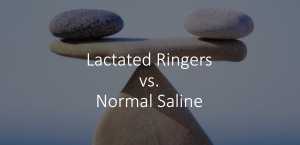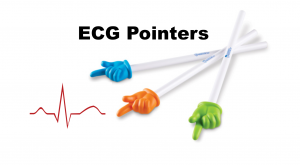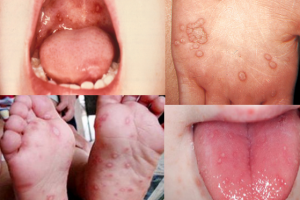Today on the emDOCs cast with Brit Long (@long_brit), we cover cavernous sinus thrombosis (CST).
Episode 117: Cavernous Sinus Thrombosis
What is CST?
- Thrombophlebitic disease of the cavernous sinuses with clot formation.
- Most commonly begins with a sinus or facial infection, which may spread to the cavernous sinus, but it may be associated with other conditions (aseptic).
- Ultimately there’s thrombus formation => obstructs venous drainage which can lead to cranial nerve compression, sepsis, death.
How common is it?
- Uncommon overall; annual incidence of 2-13 per million.
- More frequently occurs in adults between 20-50 years (mean 22 years).
- Less than 10% of cases occur in adults over age 65 years, with slight male predominance.
- Mortality is between 11-30%; 50-75% of patients experience neurologic complications.
- Most common issues include vision loss, cranial nerve (CN) palsies, pituitary dysfunction, hemiparesis, facial disfigurement, seizures, cortical vein thrombosis.
What is the anatomy?
- Cavernous sinuses consist of the left and right sinus located superior to the sphenoid sinuses at the base of the skull lateral to the sella turcica.
- Sinuses connected by two intercavernous sinuses passing anteriorly and posteriorly to the sella turcica (contains the pituitary gland). CN III (oculomotor), IV (trochlear), and the ophthalmic and maxillary branches of the trigeminal nerve (V1 and V2) pass along the lateral wall of each sinus; the internal carotid artery, sympathetic nerve plexus, and CN VI (abducens) traverse the body of the sinus.
- The sinuses receive blood from multiple areas: cerebral veins, superior and inferior ophthalmic veins, and sphenoparietal and sphenoid sinuses. Bloods drains from the sinuses via emissary veins that empty into the pterygoid venous plexus and petrosal sinuses. These connect with the internal jugular vein and sigmoid sinus.
What are the common risk factors and etiologies for this disease?
- Two forms of CST: septic and aseptic.
- Most common inciting event (up to 80% of cases) is a local infection such as paranasal sinus, facial, odontogenic (10%), otogenic (10%), or pharyngeal infection. Ethmoid or sphenoid sinusitis is associated with over 50% of cases. Orbital cellulitis or peritonsillar abscess rarely result in CST.
- Bacteria: Staphylococcus aureus (70%), followed by Streptococcus pneumoniae (20%), oral anaerobic species (<10%), gram-negative bacilli (5%).
- Viral causes less common: HIV, HSV, measles, hepatitis.
- Fungal species may also result in CST, but this is typically only in severe immunocompromise (uncontrolled diabetes, hematologic malignancy, bone marrow transplant recipients, those on immunocompromising medications).
- Aseptic causes (less common): thrombophilia, maxillofacial/ocular surgery or trauma, dehydration, systemic disease including sepsis or autoimmune disease, intracranial tumors, and medications, though these are less common.
- Thrombophilia: contraceptives, malignancy, genetic clotting disorders (factor V Leiden mutation, prothrombin G20210A mutation, protein C or S deficiency, or increased factor VIII), pregnancy, or hormone replacement .
- Idiosyncratic drug reactions associated with calcineurin inhibitors and tacrolimus used for solid organ transplantation.
- Underlying source is not found in up to 25-30% of cases.
How does all this connect for the pathophysiology?
- Cavernous sinus does not have valves and they connect, so bidirectional spread of infection and thrombi can occur.
- If due to infection, bacteria can enter the cavernous sinuses through the ophthalmic veins, adjacent tissues through soft tissue or bone defects, or from the sinuses. Once bacteria reach the cavernous sinus, they become entrapped in the trabeculations and cause further thrombosis and disease progression (contiguous phlebitis, thrombophlebitis, or septic emboli).
- No matter if septic or aseptic, thrombosis leads to decreased venous drainage.
- The increased pressure and inflammation in the area can cause cranial neuropathies.
How do these patients present?
- The key is headache plus eye signs and symptoms together, especially with a history of HEENT infection or surgery.
- Early symptoms nonspecific, with 1-21 days from the infection until signs/symptoms develop (typically 1 week).
- Headache present in 90% (most commonly unilateral with a frontotemporal or retro-orbital distribution).
- Ocular signs/symptoms present in almost all patients: chemosis, periorbital edema, eyelid erythema, ptosis, proptosis, ophthalmoplegia; symptoms may progress to involving both eyes within 48 hours.
- Unilateral periorbital edema is typically the earliest finding.
- Ophthalmoplegia present in 50-90%: may occur due to mechanical restriction associated with venous congestion, inflammation of extraocular muscles, involvement of the CNs.
- Lateral rectus palsy with limited eye abduction is one of the most common findings (CN VI involvement). CN III and IV course through the lateral wall and are less susceptible to injury.
- Sluggish or non-reactive pupil may occur due to parasympathetic nerve fiber damage of CN III, or due to dysfunction of the sympathetic nerve complex. Parasympathetic nerve damage will present with mydriasis; those with sympathetic nerve injury will present with miosis. Involvement of ophthalmic and maxillary branches of the trigeminal nerve may lead to pain or sensory changes in the upper and middle thirds of the face. May see Horner syndrome.
- Papilledema in up to 66%.
- Vision changes are common; vision loss in 8-15% of cases.
- Fever present in 94%, but this may be intermittent. Nausea, vomiting, rigors, chills, myalgias may occur.
- Those are the findings that can clue you in to this diagnosis.
- 40% can have meningismus.
- Mental status changes, seizures, focal deficit may occur.
- Other issues: Thrombophlebitis may spread to the internal jugular vein (Lemierre’s syndrome). Pneumonia and empyema may occur; intracranial involvement may lead to stroke, brain abscess, subdural empyema, meningitis, encephalitis.
- Hypopituitarism due to ischemia or the direct spread of infection.
- Takeaway: Think CST in patients with prior head/neck infection or other risk factors for CST (e.g., thrombophilia, head/neck operation or trauma, dehydration, etc.) who present with headache, fever, ocular findings, CN abnormalities (CN III-VI), or meningeal findings.
What is the ED evaluation?
- CST can be a clinical diagnosis based on your history and exam.
- Labs: WBC elevation with left shift in up to 90%; CRP/ESR and D dimer may be elevated. Sensitivity not high enough to use for exclusion.
- Blood cultures positive in 70%.
- Perform LP if concerned about meningitis/encephalitis: CSF with pleocytosis (80-100%), elevated protein, and low glucose.
- Imaging: CT of the orbits and head with IV contrast delayed phase or MRV.
- Non-contrast CT may reveal thrombosis in 25%.
- CT orbits/head with IV contrast may reveal filling defects, sinus lateral wall bulging (one of the most common and sensitive findings), flow reversal, abnormal enhancement, exophthalmos, venous congestion.
- MRV is 95% sensitive; obtain MRV if CT IV contrast negative but clinical concern remains.
What is the focus of treatment?
- Limited high-quality data on management; most recommendations based on retrospective studies and expert opinion.
- Primary tenets of management: resuscitation in those with evidence of sepsis, broad-spectrum antibiotics, anticoagulation, specialist consultation (otolaryngology, neurosurgery for intracranial complications, ophthalmology for ocular complications).
- Antibiotics: ceftriaxone 2 g IV or cefepime 2 g IV plus vancomycin 20 mg/kg IV or linezolid 600 mg IV. Add metronidazole 500 mg IV for dental/sinus infection.
- Add antifungal agents for those with severe immunocompromise or poorly controlled diabetes (voriconazole, itraconazole, or amphotericin b).
- Anticoagulation is controversial because we don’t have high quality RCT data but it is commonly used.
- Proposed benefits include preventing clot propagation, reduction in inflammation, platelet inhibition, and assisting with antibiotic penetration into the thrombus.
- Risks include intracranial or systemic hemorrhage, but this is likely rare.
- Several studies have found reduced mortality and improved neurologic outcomes with anticoagulation (UFH or LMWH) (4-6). A Cochrane review of 79 patients found no reduction in death or dependency with anticoagulation, but authors of the review state anticoagulation is safe, with potentially a reduction in risk of death or dependency (7).
- Based on current evidence, anticoagulation is likely safe; may reduce morbidity and mortality. Several options for anticoagulation: UFH can be reversed quickly, LMWH may cause less bleeding.
- Ultimately, make the decision to anticoagulate with the admitting physician and specialist. Anticoagulation is typically continued for at least 4-6 weeks, and in many cases 3 months.
- Corticosteroids are controversial; may decrease orbital inflammation and CN and vasogenic edema.
- One study of 88 patients with CST found no improvement in survival, recovery, or survival with disability with steroids, but steroids are beneficial in patients with adrenal or pituitary insufficiency (7)
- Administer steroids if the patient has adrenal or pituitary insufficiency, or at the request of the specialist.
- Surgical intervention is rarely performed and difficult due to the anatomy. Usually reserved for treating the primary site of infection endoscopically. May include sphenoidectomy, maxillary antrostomy, mastoidectomy, ethmoidectomy, orbital decompression, or craniotomy and ventricular shunt placement (for subdural empyema or abscess).
Summary:
- CST is a rare but deadly thrombophlebitic disease affecting the cavernous sinus.
- The most common inciting event is a local ENT infection; others include thrombophilia, maxillofacial surgery or trauma, dehydration, and idiosyncratic medication reactions.
- Most common signs and symptoms include fever, headache (frontotemporal or retro-orbital), and ocular issues (chemosis, periorbital edema, eyelid erythema, ptosis, proptosis, ophthalmoplegia, and vision changes). Cranial nerve palsies may occur; CN VI most commonly affected (resulting in lateral gaze palsy).
- Leukocytosis occurs in up to 90% of cases; elevated CRP/ESR common. Normal laboratory testing should not be used to exclude the diagnosis.
- Blood cultures are positive in up to 70% of cases. CSF testing may reveal pleocytosis, elevated protein, and low glucose.
- CT of the heads and orbits with IV contrast delayed phase imaging is the first line imaging modality in the ED. MRV has highest sensitivity for diagnosis.
- Treatment includes resuscitation, broad-spectrum antibiotics, anticoagulation, and specialist consultation.
- Antibiotics should cover staphylococcal and streptococcal species, gram-negative bacilli, and oral anaerobes. Provide fungal coverage for those with severe immunocompromise or poorly controlled diabetes.
- While there are no high-quality randomized data concerning anticoagulation in CST, it is likely safe and may reduce morbidity and mortality.
References:
- Long B, Field SM, Singh M, Koyfman A. High risk and low prevalence diseases: Cavernous sinus thrombosis. Am J Emerg Med. 2024 Sep;83:47-53. Caranfa JT, Yoon MK. Septic cavernous sinus thrombosis: A review. Surv Ophthalmol. 2021 Nov-Dec;66(6):1021-1030.
- Ebright JR, Pace MT, Niazi AF. Septic thrombosis of the cavernous sinuses. Arch Intern Med. 2001 Dec 10-24;161(22):2671-6.
- Caranfa JT, Yoon MK. Septic cavernous sinus thrombosis: A review. Surv Ophthalmol. 2021 Nov-Dec;66(6):1021-1030.
- Southwick FS, Richardson EP Jr, Swartz MN. Septic thrombosis of the dural venous sinuses. Medicine (Baltimore). 1986 Mar;65(2):82-106.
- Levine SR, Twyman RE, Gilman S. The role of anticoagulation in cavernous sinus thrombosis. Neurology. 1988 Apr;38(4):517-22.
- Weerasinghe D, Lueck CJ. Septic Cavernous Sinus Thrombosis: Case Report and Review of the Literature. Neuroophthalmology. 2016 Oct 19;40(6):263-276.
- Coutinho J, de Bruijn SF, Deveber G, Stam J. Anticoagulation for cerebral venous sinus thrombosis. Cochrane Database Syst Rev. 2011 Aug 10;2011(8):CD002005.






